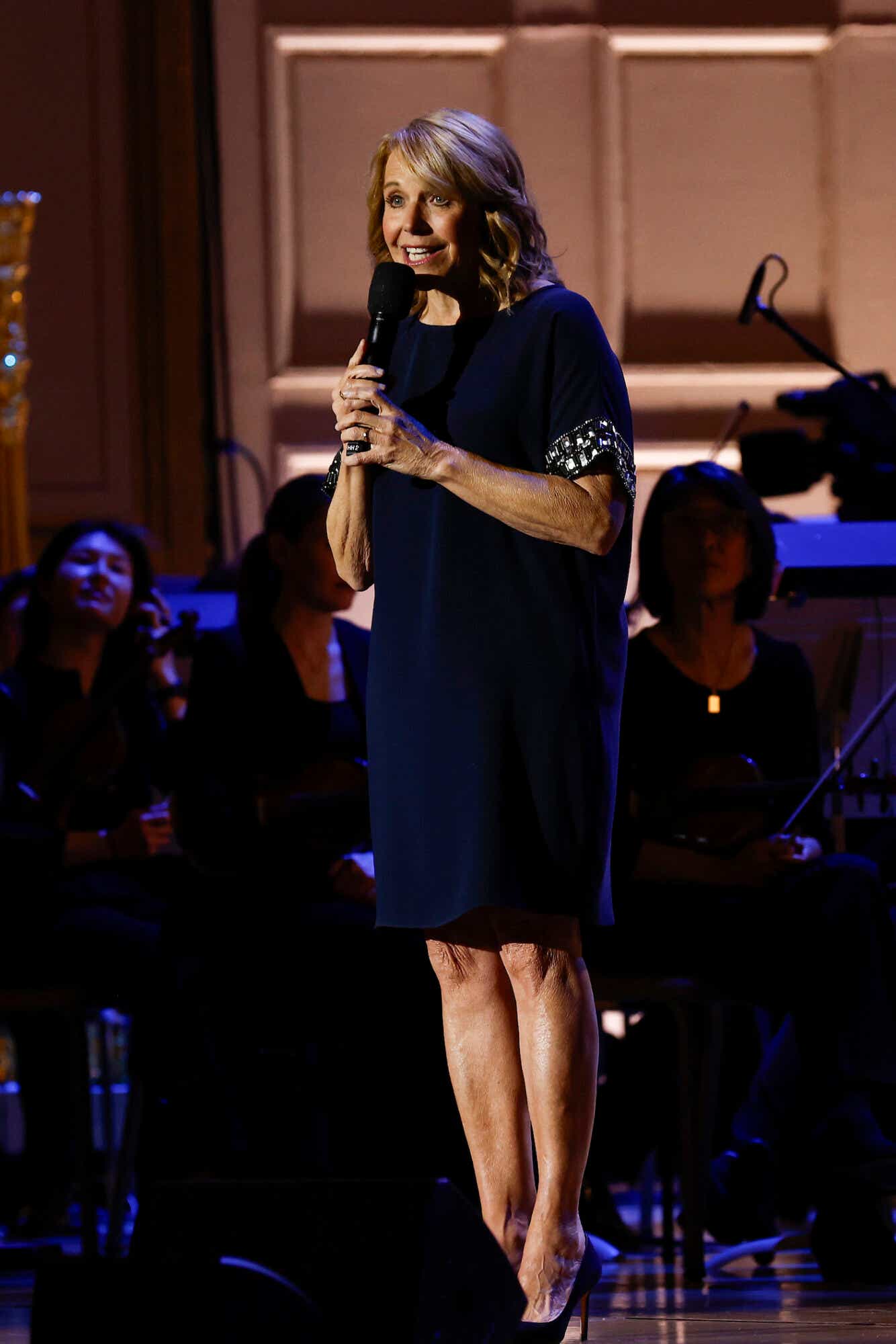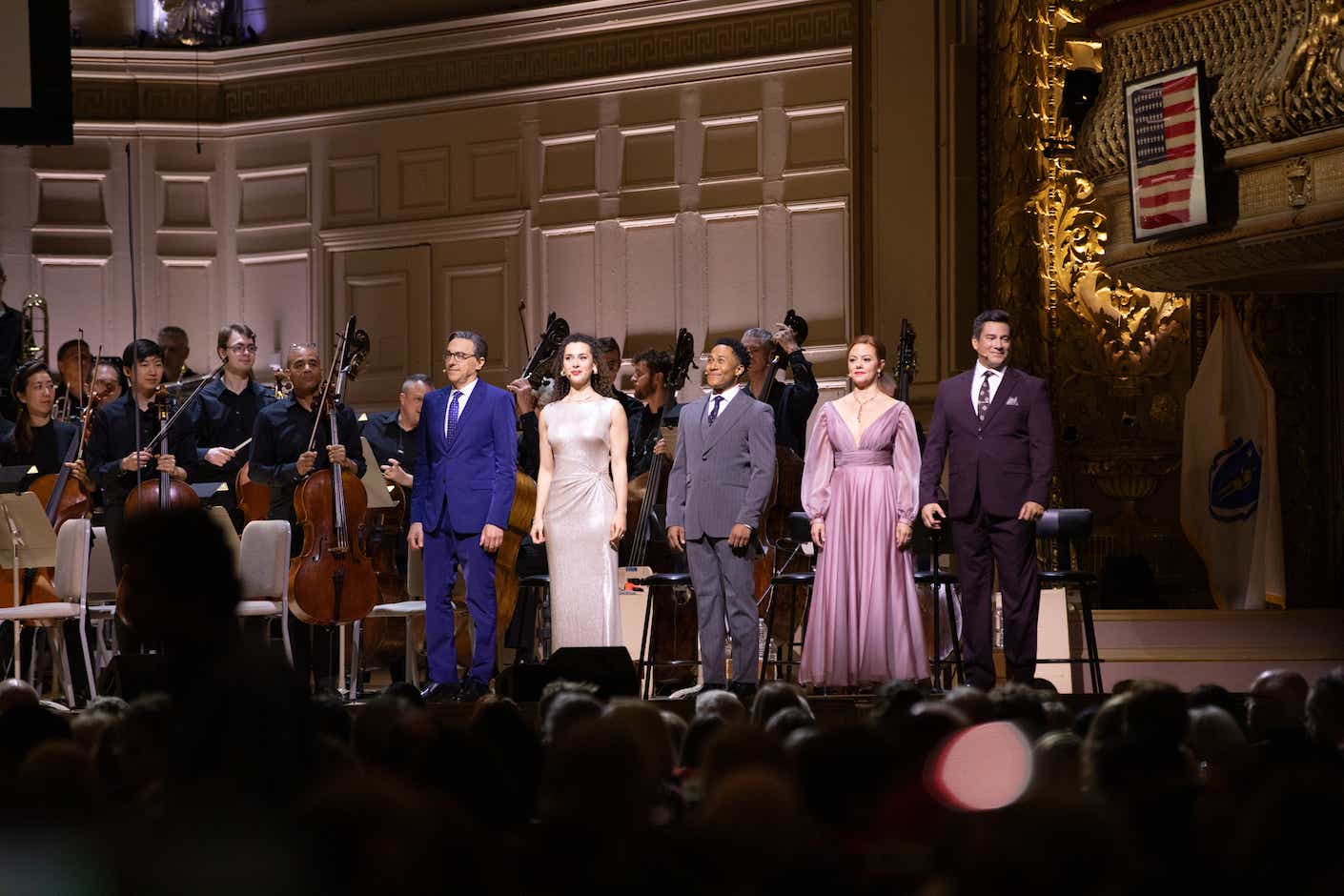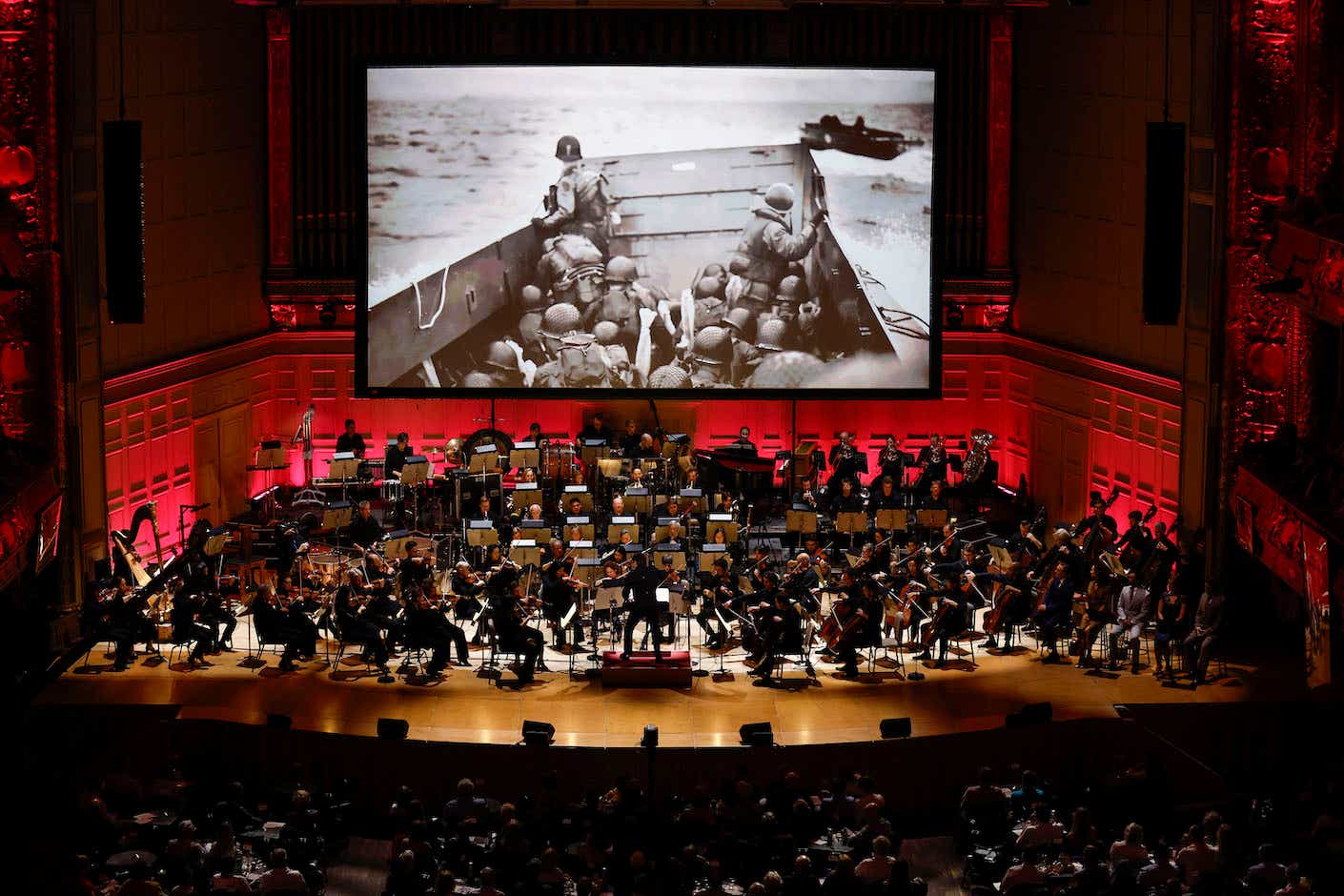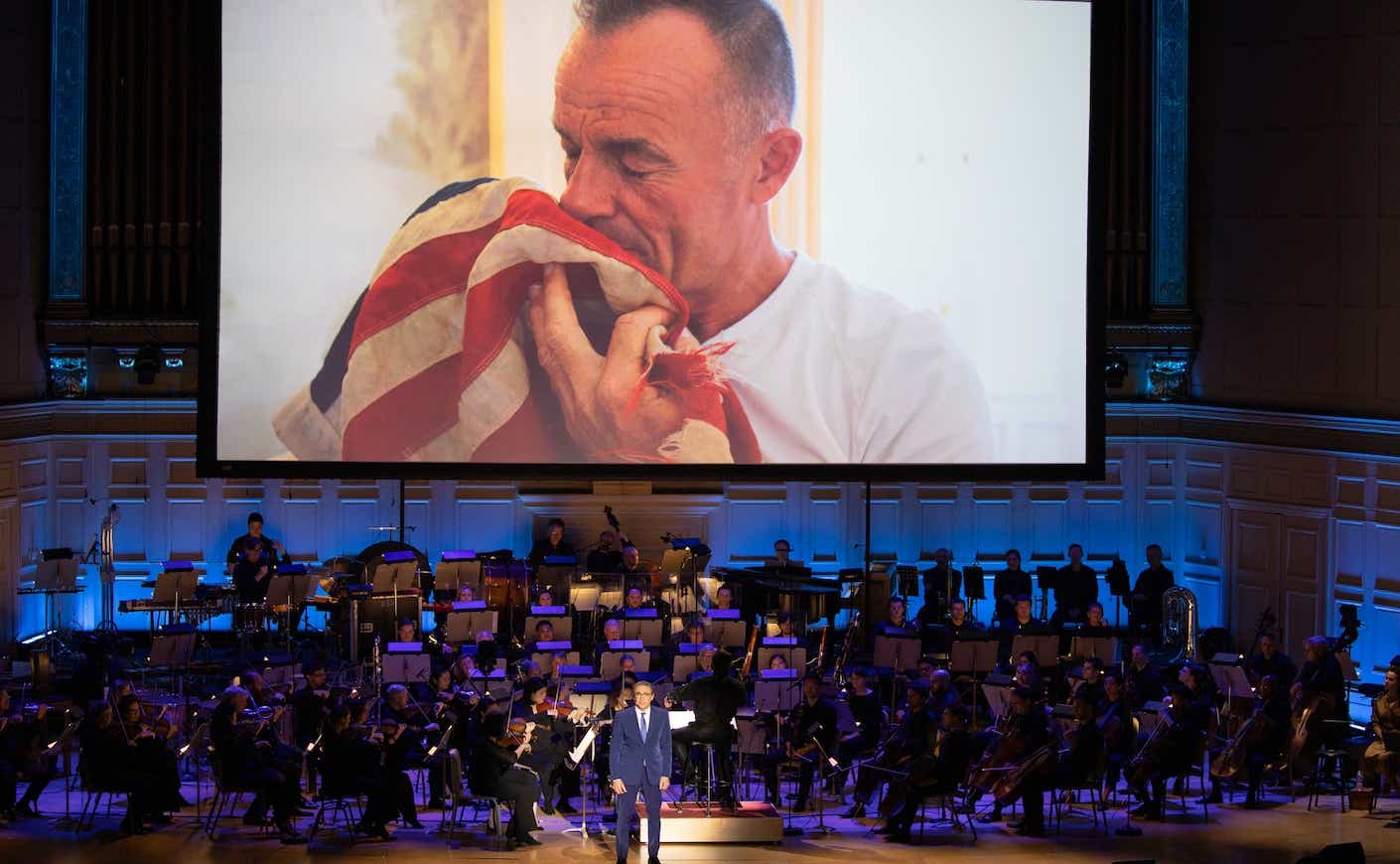The invasion of Normandy on June 6, 1944 — or D-Day — has gone down in history as a turning point in the war against Nazi Germany. On this fateful day, thousands of Americans joined Allied forces to drop behind enemy lines, and historian John Monsky brought that day back to life on stage.
Narrated by Monsky himself, The Eyes of the World: From D-Day to V-E Day, which was recently staged with the Boston Pops, retells the dramatic last several months of World War II through the eyes of author Ernest Hemingway, LIFE magazine war photographer Robert Capa, and model-turned-photojournalist Lee Miller. The production was filmed and will air on PBS to mark Veterans Day beginning November 1 and will also be available to stream via the PBS app.

Even if you’re not a history lover like Monsky, you’ll be entranced by his immersive show, which combines videos, archival photos, personal letters, and live acting with musical arrangements performed by a 58-piece orchestra.
Our own Katie Couric introduced the production in Boston. She and John Molner were so moved by what they saw that they asked Monsky to share more with us.

Katie Couric Media: This past June marked the 80th anniversary of D-Day. Why do you think it’s so important Americans recognize and remember this day?
John Monsky: Too many American boys died on the beaches and in the hedgerows of Normandy for us not to remember them and what they died for: freedom. There are more than 9,000 Americans buried in the American Cemetery in Normandy — a cemetery that sits on a bluff overlooking those beaches. Think of what the world would be like without them. Would we be under the rule of Japan? Germany? Hitler’s sons? In many ways, everything we enjoy today turned on the efforts of the allied armies across the globe. D-Day is a critical part of that.

In your show, you profile a few high-profile American figures who participated in the Normandy landings. What can you tell us about Ernest Hemingway, Lee Miller, and Robert Capa, and their roles in the war?
The characters in this story are interesting, amazing, and crazy, all at the same time. Ernest Hemingway was, at times, fighting this war, not just covering it. Lee Miller stopped at nothing to get her stories, and she really saw too much. She was severely damaged by the war. Fearless Robert Capa should have died on Omaha beach, but he came back with some of the greatest war pictures ever. We highlight Capa’s pictures in this production.
Miller’s family gave us access to thousands of her photographs, and they drive the story. Finally, Hemingway’s great-grandson, Patrick Hemingway, gave us wonderful insights and encouragement. There’s a fourth figure in the production, a counterintelligence officer in the 4th division. He develops a friendship with Hemingway. And the story of the two of them in the middle of this war is amazing — no that’s not good enough. Amazing isn’t strong enough. “Wow” might be a better word. What a story. As I turned the pages on this, it was just too cool to stop researching. We tell it the best we can tell it. Hemingway, Miller, Capa…they were all friends. And our counterintelligence officer, a 25-year-old kid, falls into the middle of them.

Your show tells the story of “one landing craft, one flag,” that made that treacherous landing. Having extensively studied this period of history, what surprises you most about the men who landed on Omaha and Utah beaches?
D-Day was just the first day. Never forget that. We watch Saving Private Ryan and think, “Great, that’s it,” and go home. But the fight that followed was brutal. In the hedgerows, in the Hürtgen Forest, in the Battle of the Bulge, into the camps — it was awful.
A lot of folks feel that once we got control of the sky, about a month before D-Day, it was all but over. That’s too simplistic. Even with our airpower, so much could’ve gone wrong. And if the Germans had their tanks in place (Hitler’s fault), we might never have gotten off those beaches. And don’t forget, Hitler was getting pretty close on a jet aircraft that could have turned airpower back in his favor. So, had the invasion been delayed or pushed back a year, who knows where we would be? There’s really a lot of drama in the story.

There aren’t many veterans of World War II still living. In fact, less than one percent of the 16.4 million Americans who served during World War II are still with us today. What else should we do besides your work to preserve and honor their stories?
If you can afford it, go visit the beaches in Normandy. You’ll be moved. You’ll be changed. If that’s not possible, learn, watch, or read Band of Brothers, Masters of the Air, [and/or] Schindler’s List. The more you know, the more you carry the flame.
Was the war's outcome ever in doubt once America and its allies landed at Normandy? One of the most deadly phases of the war — the battles in the Hürtgen Forest, resulting in 34,000 American casualties over 5 months in brutal winter conditions — took place in the final phase of the war. Was the decision to take this route to Berlin a mistake or a necessary step to end the war?
I think most historians accept the fact that the Hürtgen was a mistake. It was the first Vietnam, in a way. We could have gone around it and bottled it up. There’s a theory that we had to protect the dams in the area. I’m not sure we had to do that, and 34,000 casualties is a lot, dam or no dam. We could have done better by our troops.









